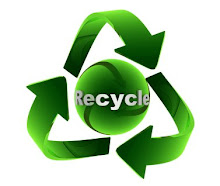Mike: first i would like to say that i am having a great time here with cici and she is a great mentor and teacher.

so far we've learned about Storm water management and how to keep our water clean.We went out in the field and conducted some test about the draining systems in parking lots around the campus.We did the PH testing with soda,water,chips and peanuts.wed we did our first creative brief which was a little difficult for me so i might do mine over.this upcoming week is the one.i hope we do more hands on projects and i honestly look forward to learning some more about everything our teachers want to teach us.none of this stuff is easy or simple but its not hard no matter how old you are learning is always new.Thanks CiCi

Marianne: This week we started to get to know about engineering. On Monday we were introduced to a lot of people who are taking up engineering. They showed us their labs and and told us about their college. On Tuesday we walked around with professor Awada to learn about storm water. We walked to 4 to 5 different parking lots to see where the storm water goes. On Wednesday we were in the lab and we did an experiment on doritos and peanuts. We were determining were the calories come from and how to find out how many calories are in the bag of chip and peanuts.
Shequannah: I want to say that i enjoy that i' am learning many things about are water and there were many things i didn't know and i; m glad i know i learn and i;m glad i came:) When it rains water washes over roofs.street,driveways, sidewalks, parking lots,and land surface along the way it can be pick up a variety of chemical and soil this polluted storm water drains in to are rivers and streams the pollutant can endanger the waterways making then unhealthy for people.

Brandon: Storm Water Management is a problem in many large cities. The precipitation falls and makes it way to a gutter or man hole and along the way picks up harmful materials for the rivers, and lakes that the water eventually ends up in. In the process of the storm water making it to the gutters everything that is picked up is harmful to the environment and lowers the quality of the lake and water and other water that will become drinking water. There are three acts in place that help to provide guidelines for cities to build on. The Clean Water Act of 1972, the Safe Drinking Water Act 1974, and the Endangered Species Act 1973. These acts have improved the well being of the habitats of surrounding rivers ,lakes, and even the Ocean. These acts allow for there to be permits in place to build lots in the United States, and very strict guidelines.
Carole: I learned if there is know place for the rain to go then it can really harm our o-zone layer.

There for if should be some type of grass where there is to much cement. During my research I've learned that storm water has two components. These components are the increased volume and rate of runoff from imperious surfaces and the concentration of pollutants in the runoff. Both components are directly related to development in urban and urbanizing areas. The websites also mentioned what the storm water pollutants can include. The storm water pollutants can include trash,debris,nutrients causing eutrophication of lakes,sediment,,paint and other hazardous substances and oil.

 r the youth, but furthermore the community. Skills that I have picked up over the years, I have redefined and build on through this program. Skills such as leadership, teamwork, and enthusiasm that will have an even greater impact on my life as I grow further in my profession field. Along with the internal skills we have learned and fine tuned our technological literacy, verbal communication skills, and our total ability to meet and greet in a professional setting. The whole experience has been tremendous and the general direction that it sends the students into is awesome.
r the youth, but furthermore the community. Skills that I have picked up over the years, I have redefined and build on through this program. Skills such as leadership, teamwork, and enthusiasm that will have an even greater impact on my life as I grow further in my profession field. Along with the internal skills we have learned and fine tuned our technological literacy, verbal communication skills, and our total ability to meet and greet in a professional setting. The whole experience has been tremendous and the general direction that it sends the students into is awesome.





















